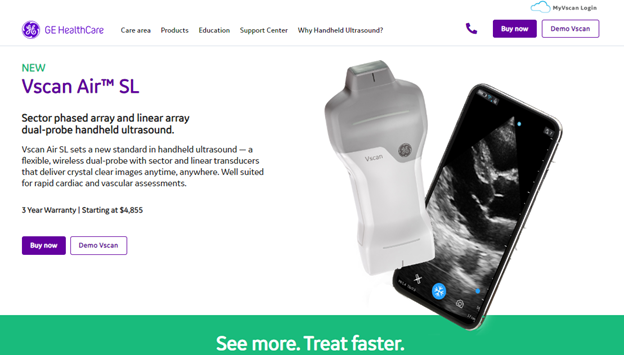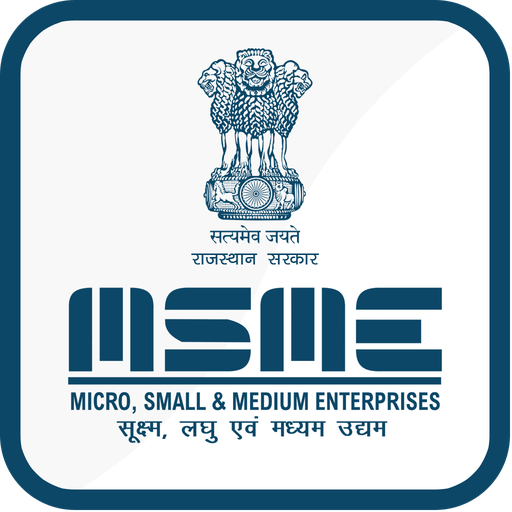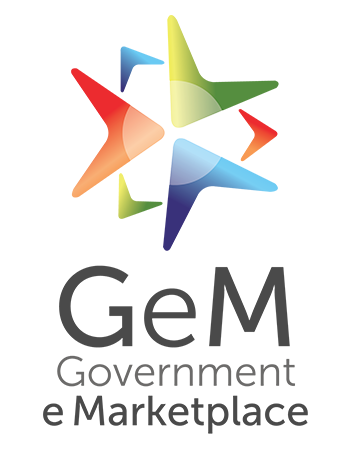Imagine that you went out for work and left your AC running at home. Wouldn’t it be amazing if you could turn it off from your phone instead of having to go back home to do so? This is exactly what IoT (Internet of Things) devices are making possible today.
Right from its inception, the Internet could be accessed only with PCs, smartphones, and tablets. But today, with the help of IoT, nearly all gadgets can be connected to the internet and monitored remotely.
Home appliances, office equipment, medical devices, industrial machinery, vehicles, and a lot more can be networked to track and control them externally. In post-COVID times, this technology has become more effective in the healthcare sector than ever before.
The use of the Internet of Things in healthcare is gradually transforming the entire process of testing, detecting, and treating diseases. With constant innovation and inclusion into new sectors of the medical field, IoT devices are set to be a mainstay in hospitals and clinics.
Table of Contents:
What is the Internet of Things (IoT)?
To put it simply, the Internet of Things(IoT) is a network of physical things – appliances, devices, vehicles, and other machinery, that are equipped with sensors, network connectivity, and software that lets them gather and exchange data.
For instance, you are in a smart home and ask the virtual assistant “Switch off the bedroom lights”, and the lights go off. This is IoT in action. The lights are fitted with sensors that can pick up voice signals from your home assistant (Alexa, Google Assistant, etc.), process them, and make the device act accordingly.
Today, cars and homes can be turned into ‘smart’ cars and homes by integrating IoT technology. In cars, for example, the various parts such as engines, carburetors, internal circuits, air filters, and tires are being networked to monitor their working and predict the need for repairs and changes in advance.
Buildings and even towns and cities are being equipped with this technology. IoT devices are helping to determine maintenance and repair needs, manage traffic, measure pollution levels and air quality, and intercept illegal activities and crime.
What is IoT in Healthcare?
It is obvious that technology cannot stop people from aging or put an end to chronic diseases. However, it can make identifying and treating them easier with the help of interconnected devices.
Diagnosis of illnesses contributes to a huge part of hospital bills. The use of IoT devices for this purpose can shift the routine of minor medical check-ups from hospitals and health centers to the patient’s home.
Wearables like smartwatches and health trackers are the most common examples of IoT devices being used to monitor health. They can provide reliable data on factors like heart rate, blood oxygen level, sleep duration, and much more.
Ingestible sensors can be swallowed by patients and be used to monitor health conditions and apprehend the occurrence or relapse of diseases. The data transmitted by these sensors can be displayed to doctors using computer vision for more efficient treatment.
The basic steps that are followed when a medical IoT device works include:
- Step 1 – A sensor collects data from the patient’s body.
- Step 2 – Artificial Intelligence (AI) powered technology like machine learning and data analytics is used to evaluate this data.
- Step 3 – The device decides whether to act or send this information to the cloud.
- Step 4 – Doctors can access this data and make informed decisions based on it.
Benefits of IoT Implementation in Healthcare
Interconnected devices used for medical purposes, also known as the Internet of Medical Things (IoMT) is one of the fastest-growing segment in the IoT market. According to recent studies, the global IoMT market is set to reach $176 billion by 2026.
This is because IoT technology is rapidly modernizing what the healthcare industry can do and how efficiently it can do it. We have discussed some of the key advantages of utilizing IoT in healthcare.
Remote Patient Monitoring
Distant tracking of health with the help of IoT devices can become life-saving in case of emergencies like heart attacks, diabetes fluctuations, and epileptic seizures. It is also the only viable option during unforeseen events like pandemics, natural disasters, or wars.
Remote patient monitoring can be defined as the use of technology like sensors, wearable devices, software, and mobile apps to collect medical information from the patient’s body and send it to healthcare providers.
It allows doctors and nurses to continuously monitor and assess the health status of the patient without involving a traditional clinical setting. Remote patient monitoring aims to enhance the diagnosis and treatment processes while bringing down healthcare costs.
It tries to do away with in-person visits and admission to hospitals unless absolutely necessary. We all witnessed the application and benefits of remote healthcare during the COVID-19 pandemic and subsequent lockdowns.
End-to-end Connectivity
With the Internet of Things, patient-care workflows can be fully or partially automated to provide faster and hassle-free treatment. The use of healthcare IoT solutions frees doctors and medical service providers from a lot of routine tasks and lets them focus on more critical cases.
The implementation of AI in the medical field has introduced new levels of interoperability and machine-to-machine information exchange. By using connectivity features like Wi-Fi, Bluetooth LE, ZigBee, and Z-wave, healthcare operators can easily identify health risks and keep tracking them in real-time.
Most hospitals and diagnostic centers already have an artificial intelligence development company to develop and optimize their IoT applications. This automated framework significantly reduces medical expenses by cutting down on doctor visits and hospital admissions whenever they can be avoided.
Big Data Analysis
‘Big data’ refers to large volumes of raw and unfiltered data. It is characterized by the five V’s – namely volume, variety, velocity, variability, and value.
In healthcare organizations, a network of IoT devices can collect, examine, and analyze all of this information to determine the best course of treatment. Millions of data points can be used for three types of analysis:
- Descriptive Analysis– To detect and measure what happened, like frequency, intensity, and costs.
- Predictive Analysis – To use the descriptive evaluation and forecast probable events and outcomes in the future.
- Prescriptive Analysis – To give IoT devices the ability to make informed decisions and take action whenever these predicted events occur.
With the ability to handle big data, IoT devices can be trained with machine learning procedures to manage entire hospitals and clinics.
All databases of patient records, case histories, doctor schedules, logistical management, staff records, and much more can be easily supervised. This way, hospitals can ensure that they can optimize their services by constantly keeping track of various requirements while making their operations more cost-efficient.
Tracking and Detecting Threats
One of the major healthcare IoT benefits is the constant monitoring of the patient’s physical conditions and giving immediate alerts the moment a risk is identified. This is why healthcare app developers are being sought after by most hospitals and clinics to modernize their workflows.
Medical IoT gathers key signs of diseases or attacks and transmits this data to doctors for real-time examination. These devices can also notify the family and friends of the patient in such cases.
Constant tracking and updates give a clear picture of a patient’s condition, independent of time and place. It also helps doctors take decisive action and provide treatment when situations arise.
For instance, patients having serious cardiac disorders like arrhythmias or irregular heartbeat undergo ICD (Implantable Cardioverter-Defibrillator) surgery, where an ICD device is implanted in their chest.
This device detects irregular heartbeats and delivers a very small amount of electric current, called a ‘counter-shock’, to balance the flow of blood in and out of the heart. This ensures that the heart functions properly and prevents cardiac attacks.
The ICD can be monitored externally by healthcare operators. Whenever the device produces a shock, it means that there is a chance of cardiac arrest. In this case, doctors can modify and regulate the functioning of the ICD according to the patient’s present condition.
Enhanced Medical Research
Any research process in the medical field requires the collection of large volumes of information that is extremely tedious and time-consuming to achieve manually. The integration of IoT is putting an end to this problem.
All kinds of data including patient histories, case studies, statistics, and drug efficacy reports can be accessed and evaluated at lightning speeds. The data can then be converted to scalable facts and figures that can be used for making accurate predictions and drawing justified conclusions.
With this entire process being done automatically, researchers and doctors can divert their attention to more critical areas that require human intelligence and decision-making.
This opens up new avenues for innovation like the discovery of new medical devices, drugs, ways of diagnosing diseases, and treatment methods. The marvels of this technology were evident, especially during the COVID-19 lockdowns.
With laboratories and testing facilities working with only a fraction of their staff, inventing and mass-producing effective vaccines appeared to be an impossible feat.
However, with IoMT devices constantly aiding the human workforce, capable vaccines were produced by a number of pharma companies and made available to the public at affordable prices.
IoT is also transforming research facilities and creating ‘smart labs’ that are equipped with a variety of sensors and tracking devices. These operate constantly and monitor everything starting from lab temperatures, gas leaks, virus breakouts, and device failures.
Real-life Cases of IoT in Healthcare
The COVID-19 pandemic was a big eye-opener for the entire world on the importance of remote healthcare facilities and why they cannot be taken for granted. There are already plenty of examples of IoT devices working successfully in the medical field.
They include hearable and wearable gadgets, ingestible sensors, mood sensors, computer vision technology, computer vision technology, insulin pens, video pills, and smart CGM (Continuous Glucose Monitoring) devices.
More and more medical service providers are looking to introduce IoT devices and develop effective mHealth apps to improve their services and working. Let us take a look at some of the real-life use cases of IoT technology being used in healthcare.
Medtronic MiniMed 770G Insulin Pump
The Medtronic MiniMed 770G is one of the first smart insulin pumps to be approved by the FDA. It uses network connectivity to deliver insulin automatically based on the patient’s real-time glucose levels.
It enables you to track glucose levels continuously on your smartphone and can also send notifications and alerts to your friends and family in case of emergencies.

GE HealthCare Vscan Air SL
GE Healthcare’s Vscan AIr SL is a wireless ultrasound device. It features a sector and linear transducer that produces high-definition images on the go. These can be accessed and shared from both PCs and smartphones.
Thus doctors can receive the latest updates about the patient’s condition anytime and from anywhere. This significantly benefits the monitoring and treatment processes.

Atmo Gas Capsule
Atmo Biosciences has released a gas-sensing capsule that can identify the gases present in the patient’s gut. This helps to effectively diagnose and treat gastrointestinal disorders.
When ingested, the capsule can report important data about the human digestive tract and detect a variety of gastronomical diseases such as IBS (Irritable Bowel Syndrome), IBD (Inflammatory Bowel Disease), and carbohydrate intolerance and malabsorption.

It is basically a “lab in a pill” and can be accessed remotely by a hand-held wireless device. This helps healthcare providers to constantly stay updated about the patient’s conditions and administer treatment whenever required.
Read Also: How AI Takes Businesses to New Heights: The Definitive Guide
Limitations and Obstacles of Adopting IoT in Healthcare
Although the Internet of Things is reshaping the way illnesses are detected and treated, there are certain challenges and areas of concern to keep in mind, just as in any evolving technology.
Privacy and Data Security
One of the major pain points of integrating IoT into medical processes is the risk of breaches of personal and private data. IoT devices are programmed to collect large amounts of data and transfer them in real time.
However, if they lack the necessary security measures and data usage guidelines, the personal data of patients, doctors, and hospital staff may be put at risk. There are also issues of data ownership and regulation in certain electronic devices. This can pose several threats in the field of healthcare.
PHI Security Risks – Patient Health Information (PHI), or the short and long-term medical records of patients can be accessed by IoT devices. This should be shared only with doctors and healthcare professionals. However, they can be intentionally or unknowingly shared with other parties with malicious intent.
Privacy Breaches – Hackers are always looking for sensitive data like demographic details, social security numbers, credit card and bank details, and social media account details. Cybercriminals can infiltrate IoT networks and misuse such information.
Data Ownership – The data collected and transmitted by wearable gadgets like smartwatches should technically belong to the user, and not be shared without their consent. However, depending on government regulations in different countries and states, this might not, at times, legally be owned by the user.
Medjacking – Medjacking refers to the process of hijacking a medical device. This is one of the most significant risks of using IoTs as hackers can compromise the security of the devices and gain unauthorized access. They can take control of the network of devices and even plant malware to disrupt its working.
Legacy Issues with Equipment – Just as in any other industry, healthcare institutions do not like to get rid of assets until they have depreciated completely. Such outdated machines may no longer receive security updates and may not follow the required protocols. Some IoT devices most vulnerable to this obstacle are Ultrasound machines, IV pumps, Voice over Internet Protocol (VoIP) phones, and IP cameras.
Data Overdose and Accuracy
As we observed earlier, data guidelines and regulations regarding the use of IoMTs vary on the basis of country, region, and state. There are numerous rules and regulations involved in overseeing how patient data is collected and made use of.
This can often disrupt the network of devices in an IoT ecosystem, and lead to factually incorrect data being stored and processed for treatment purposes. It poses a huge detriment to the patient’s health and also the running of the treatment or diagnostic facility.
There can also be an overload of data where the IoT network takes up more data than it can process accurately. This can cause one or more devices to malfunction, hindering the functions of the entire chain of devices.
The interoperability of IoT devices is both a benefit and a key limitation. Obstructions to the working of one gadget can bring the entire series of operations and functions to a standstill.
Chances of Failure
Devices can develop complications over time. There can be bugs and glitches that limit them from performing their desired functions accurately. Skipping software updates, poor network connectivity, and power failures can severely hamper the working of IoT devices.
All these factors can cause the various sensors to convey incorrect information about the patient’s health and lead to flawed treatment measures. Faults in a hospital’s internal IoT devices that monitor doctor visits, employee shifts, and staff records can also disrupt the workflow, posing further threats to the ones receiving treatment.
Cost of Implementation
Talking about the cost as a limitation sounds a bit paradoxical, as we have mentioned multiple times that the use of IoT helps to make healthcare more cost-efficient in a number of ways.
This is only the case in developed economies where both hospital authorities and the public have a high spending capacity. IoT is still a rather new technology and can take thousands, and even millions of dollars to integrate into an entire hospital.
Therefore, in developing countries, it is both expensive for healthcare facilities to incorporate this technology fully, and for patients to bear the high prices of treatment. It will still take at least several years before this technology becomes feasible for masses around the world.
How to Adopt IoT Healthcare Solutions – Best Practices
The incorporation of IoT in medical operations requires the perfect synchronization between hardware and software. The following steps are to be taken to achieve this.
Analysis of Hardware and Software Requirements
At the very beginning of any IoT project, you should form a clear picture of what technical boundaries you need to operate within and what challenges you may face. Make a table where you can note down such information for reference during the implementation process. These include:
- Technical parameters
- Time required for deployment
- Software compliance of medical devices, and
- Estimated cost of implementation.
Regulation of the Hardware Framework
To optimize the efficiency of your hardware components, you need to:
- Evaluate the connectivity level to assess its capabilities for IoT devices
- Establish a high-performing WLAN to ensure good connectivity between devices
- Make the communication between devices secure by installing the required IT infrastructure.
Software Development
After the hardware needs are sorted, focus on developing robust software systems for the devices to function seamlessly. Hiring an eminent IoT app development company can help you sort this requirement.
- Select a capable cloud-native or hybrid platform to collect, transfer, and analyze data, complying with HIPAA (Health Insurance Portability and Accountability Act, 1996) guidelines.
- Use platforms that are compatible with portable devices.
- Build software that allows smooth connection, fast data transfer, and easy-to-interpret reports and statistics.
Ensuring Medical Security
A survey by Capterra shows that hospitals with over 70% of their devices using the internet are 24% more likely to face cyber attacks. It is crucial to secure your medical IoT network against security breaches.
You should keep these factors in mind to protect your devices from malpractices.
Unpatched Devices – Unpatched devices are ones that have not received the latest software updates or ‘patches’, making them vulnerable to hackers. You should mark out which of your devices are unpatched, segregate them from the IoT network, and install the necessary updates and security measures.
Zero Trust Network Access – Zero Trust Network Access (ZTNA) enhances the level of authentication at every point a user wants to access your network. It employs a two-step verification process where you have to enter both your password and an OTP sent via text message or email. This prevents hackers from using user credentials to breach the system.
End-to-end Encryption – It is no longer enough to secure just your IoMT devices. You need to protect each endpoint of data transfer. With the help of end-to-end encryption (E2EE), you can make your data available to only authorized persons and prevent it from falling into the wrong hands.
Putting Everything to Test
Once you have taken care of the hardware and software, it is time to test how everything works in tandem, before making your IoT network available to patients. Several measures of testing by the IoT app development company are necessary to ensure flawless IoT services.
- Function Testing – To examine how the software is performing.
- Performance Testing – To check how fast the applications are running.
- Unit Testing – To check the efficiency of your code based on functions, properties, methods, etc.
- Usability Testing – To examine how user-friendly the application is.
- Stress Testing – To see how well the hardware and software work when used constantly for long hours.
- Compatibility Testing – To monitor how compatible your IoT framework is on various systems like PCs, smartphones, and tablets.
- Security Testing – To identify security threats and protect your app from cybercriminals.
Drawing the Curtain
Within a short span of time, IoT devices have established their lasting influence in the field of healthcare. This technology is constantly opening up new roads for experimentation and innovation.
As the pandemic showed us, medical facilities can no longer be confined within the walls of hospitals and clinics. Remote monitoring and treatment of diseases is the future, and IoT technology is the doorway leading into it.
If you wish to make full use of healthcare IoT solutions, look no further than Webgen Technologies. We have been offering premium website and mobile app development solutions and satisfying clients across all sectors since 2011.
Views: 1405






